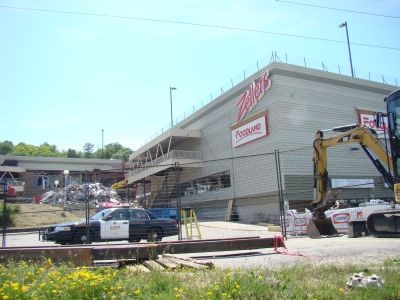There’s plenty of blame to go around in the collapse of the Algo Centre Mall roof, according to a biting report released from the Elliot Lake Inquiry on Oct. 15.
In the report, commissioner Justice Paul Bélanger said human error, occurring on multiple levels over the building’s 33-year history, was what ultimately led to the collapse.
“Although it was rust that defeated the structure of the Algo Mall, the real story behind the collapse is one of human, not material, failure,” Bélanger writes. “Many of those whose calling or occupation touched the mall displayed failings — its designers and builders, its owners, some architects and engineers, as well as the municipal and provincial officials charged with the duty of protecting the public.”
Those involved were not only apathetic, neglectful and indifferent, but showed mediocrity, ineptitude and incompetence, along with greed, obfuscation and duplicity in their dealings with the mall, he said.
A culmination of 15 months of testimony into the circumstances surrounding the June 2012 incident, the two-part report examines the events that led to the collapse, relevant legislation and procedures, and the emergency response.
Bélanger makes scathing observations about the events leading to the event and outlines more than 70 recommendations for improvement.
A bad design was exacerbated by “inadequate and incompetent maintenance and repair of the parking deck,” and complaints over the years about leaks were ignored by municipal authorities, who overlooked their own bylaws, Bélanger found.
“Engineering reports were of uneven quality, often drafted more with an eye to pleasing clients than proposing effective solutions or warning of potential dangers,” he wrote.
“Owners chose cheap and ineffective repairs or opted to sell the mall when faced with significant repair bills,” he added. “They actively concealed their knowledge of the parking deck’s condition from the city and from subsequent purchasers.”
Bélanger praised the immediate response of the local authorities as prompt and appropriate, but said the Heavy Urban Search and Rescue Unit (HUSAR) could have been deployed more rapidly, and not enough personnel were sent from either HUSAR or the OPP’s search and rescue team.
“The lack of an incident action plan was detrimental to the rescue effort,” Bélanger wrote.
The commissioner was critical of the relationships between organizations and characterized record-keeping and note-taking as “deficient.” He also censured communications efforts with victims’ families, media and the public, calling them “poor.”
“Ontario’s urban search and rescue system needs a careful re-examination to provide better overall geographical coverage and quality of service,” he wrote.
Amongst his recommendations, Bélanger said buildings covered by his recommendations should be maintained to a minimum standard to ensure public safety, and they should be inspected regularly by properly qualified structural engineers.
“I hope the government will seriously consider applying my recommendations to all publicly accessible buildings and workplaces in the province,” Bélanger wrote.
In relation to the emergency response, Bélanger focuses on “policy and attitudinal changes rather than legislative and regulatory amendment.”
“Many recommendations are aimed at making the emergency assistance process more efficient through better response times, assurance of adequate response personnel, training in different rescue techniques, enhanced communications and record-keeping, and adherence to and understanding of the Incident Management System through improved training,” he writes.
“The recommendations also suggest looking at different approaches or models of emergency response in Ontario and elsewhere and at more effective synchronicity and co-operation among emergency response organizations.”
“They also suggest a more sensitive and caring approach to victims and their families,” he added.
Two women, Lucie Aylwin and Doloris Perizzolo, were killed and several others were injured when a portion of the mall’s roof gave way on June 23, 2012. In addition to its main source of shopping and social services, the Algo Centre Mall was a communal hub for Elliot Lake, where residents gathered to socialize.




